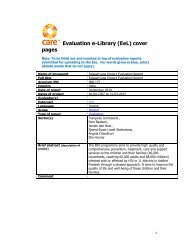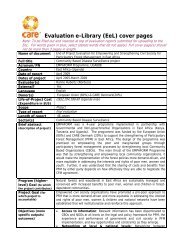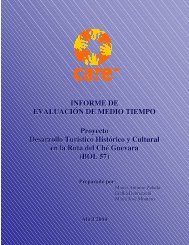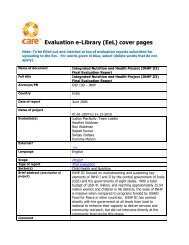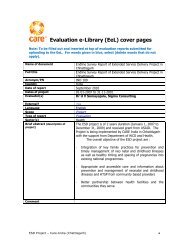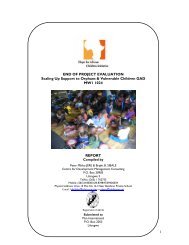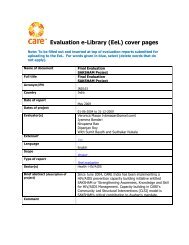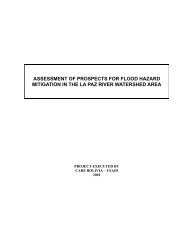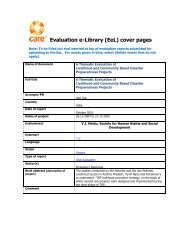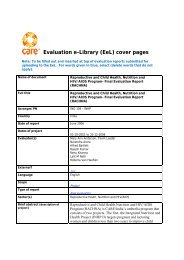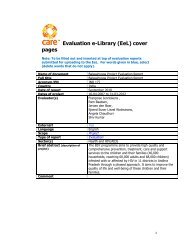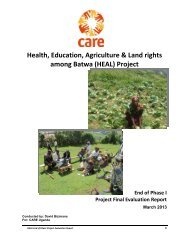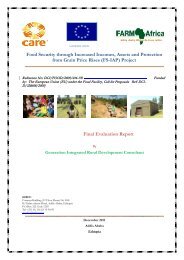IND 199 ECDE Baseline - CARE International's Electronic ...
IND 199 ECDE Baseline - CARE International's Electronic ...
IND 199 ECDE Baseline - CARE International's Electronic ...
- No tags were found...
You also want an ePaper? Increase the reach of your titles
YUMPU automatically turns print PDFs into web optimized ePapers that Google loves.
cviTable 9.6: Distribution of AWCs by levels of different components of Socialdevelopment and mean scores (Contd..)(Percentage)Q.No. Scoring on Social development InterventionAWCsIntermediateAWCsControlAWCsTeacher plans the activities inways that would encouragesharing and helping andactively promotes it amongthe children. 24.2 28.3 32.3Mean score 0.742 0.849 1.1784. Free playTeacher does not provide any timefor free play during the day.29 30 12.9Teacher provides for less than onethird of the time for free play.38.7 25 30.6Teacher provides for at leastone third of the time for freeplay and sets up the classroomwith materials to facilitate theplay. 32.3 45 56.5Mean score 1.033 1.15 1.4365. Quality of teacher childinteractionMost of the time the teacher iscontrolling and authoritarian andtalks down to the children by givinginstructions, scolding or punishing .16.1 15 4.8Most of the time the teacher isindifferent to the children and doesnot get involved with them morethan is required for teaching.53.2 38.3 14.5Most of the time the teacherconverses very pleasantly andmeaningfully with the childrenand creates an environmentfor children to interact freelywith her. 30.6 46.7 80.6Mean score 1.144 1.317 1.75795 9.3 Levels of services for children ages 0-3 yearsObservations were also made on some aspects of the services which AWCs should provide tochildren ages 0 – 3 years. Three services, in particular were observed:• Maintaining and keeping records of 0 -3 registered children• Educating caregivers on child care practices (for children ages 0-3 years), and• Educating mothers on nutrition and health related priorities•The observations were recorded by scoring them 0 (poor level), 1 (intermediate level) or 2(highest level). As stated earlier, the definition of these levels is shown in the observationchecklist for children. The results are shown in Table 9.7. It may be noted that services tochildren 0-3 on all services were of intermediate level (score 1) in intervention and intermediatelevel AWCs. In the case of control districts, the level of services was at the highest level (as<strong>Baseline</strong> Study Of Early Childhood Care And Development Project In ChattisgarhApril,2012



